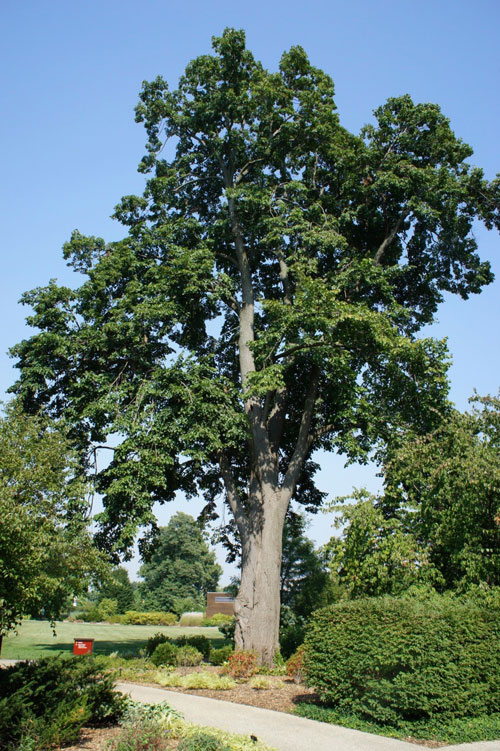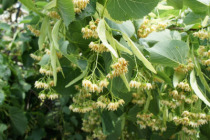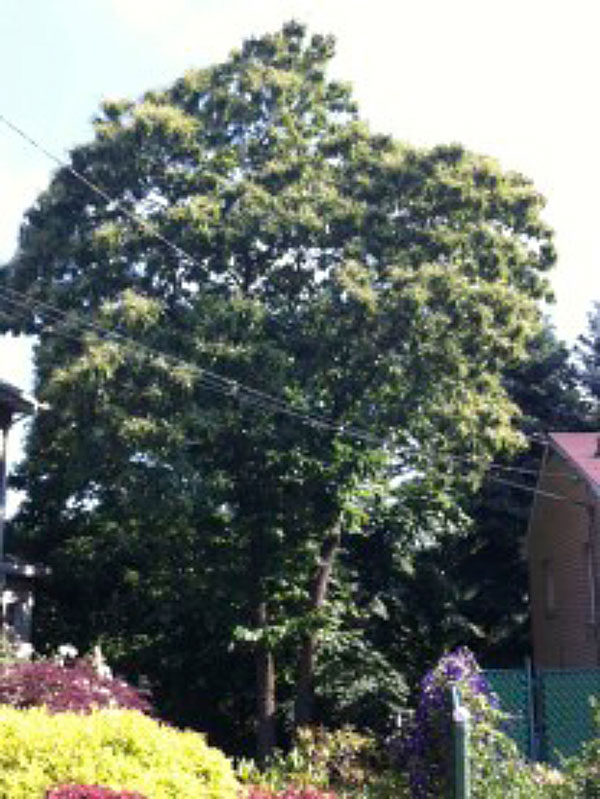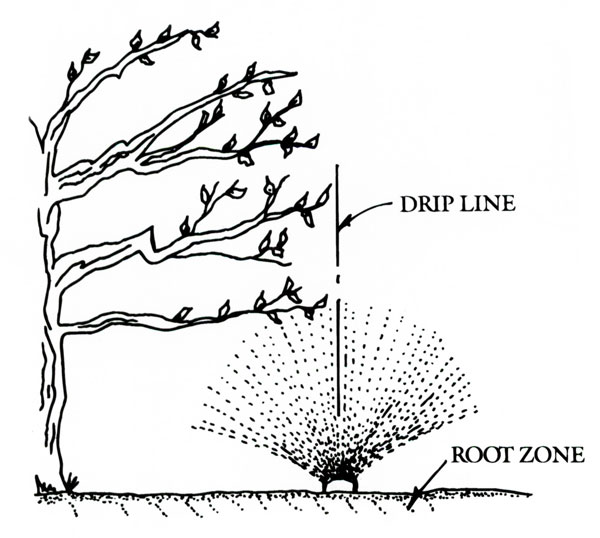June - Wisdom from the Trees
/June Tree of the Month, American Linden American Linden; Morton Arboretum in Lisle, IL
American Linden; Morton Arboretum in Lisle, IL
This month is when the beautiful Linden trees are in full flower. The American Linden, also known as Basswood or Beetree Linden is a honeybee and flower pollinator favorite because of it’s lovely sweet scent. It is also one of our favorites, so much so that we named two of our puppies after it! The Linden, known by all the above names by North Americans is remembered as a Lime tree by the British. Can you see why scientific nomenclature is a helpful tool?
The Linden is a beloved tree all over the world and in Europe most 16 century manors had a Linden planted on either side of the front door for good luck, which was a custom that travelled the Atlantic as many in the new colonies saluted memories of old and wanted good luck for the future in their new land.
This is a tree that can reach 60’-80’ in the Chicago area and a spread half it’s height. There are many cultivars of this species but often they are plagued with difficulties in structure and so our favorite Linden, daughter of Tilia is the native North American original shown here.
Linden, daughter of Tilia is the native North American original shown here.
It has a rich history and the name Basswood comes from a word meaning fiber from the aboriginal peoples of North America. They discovered that the bark of the Linden  Linden tree flowers, pale white green with sweet scentcould be soaked and separated to be plied into twine and rope and when boiled even made into fiber for weaving for mats and clothing. It is also a favorite of wood carvers. Medicinally, properties of the Linden have included management of fevers, hypertension, indigestion and as an expectorant, to name just a few.
Linden tree flowers, pale white green with sweet scentcould be soaked and separated to be plied into twine and rope and when boiled even made into fiber for weaving for mats and clothing. It is also a favorite of wood carvers. Medicinally, properties of the Linden have included management of fevers, hypertension, indigestion and as an expectorant, to name just a few.
A Lone Survivor
Backyard Wisdom by Gilbert A Smith
 While visiting our son, in Pittsburgh last week, I noticed a tree that I didn’t know. After 45 years as an arborist I’m old friends with almost every tree in the northeastern United States. I know their names and their cousins names, even better than I know my own cousins.
While visiting our son, in Pittsburgh last week, I noticed a tree that I didn’t know. After 45 years as an arborist I’m old friends with almost every tree in the northeastern United States. I know their names and their cousins names, even better than I know my own cousins.
The reason that I didn’t recognize it was that this is one of the 2 major tree species that is almost extinct from the North American landscape. I learned about this tree at the University of Illinois but never expected to see one of its kind. It was a 40 foot tall, 20” diameter, American Chestnut Tree.
For those of you who aren’t tree nuts like me, 4 billion American Chestnuts were killed in the early 1900’s by a fungus introduced from Asia. Almost one quarter of the Northeastern forests were Chestnuts.
It was a lovely thing to see, this majestic survivor of the plague. The reason that it has survived so far is that the fungus was so effective at killing its host that there are now very few places for the fungus to survive.
It made me think of the American Elm that was decimated during my lifetime and the Ash tree which is now struggling to survive the invasion of the Emerald Ash Borer. The very good news about this current battle is that we have treatments to protect Ash trees if they are treated regularly. Don’t be discouraged. Not all of the beautiful Ash trees will disappear from the landscape.
But what lessons has this lonely Chestnut to teach us? My professor, Mike Dirr, used to say, “Don’t put all your eggs in one basket. There are hundreds of wonderful trees and yet we insist on planting the same few species in our neighborhoods!” Ash, Linden, Honeylocust, Red and Norway Maples are wonderful trees because they are tough and fast growing, so everyone wants them and every landscaper recommends them.
There are many wonderful underplanted gems to fit almost any planting site. We hope to have a list of many up soon on our website. Or, call us out, we’re always glad to introduce you to one of our old friends. In nature there is always diversity, so I think that the lone Chestnut tree tells the story of natural balance and survival.
HUGE Plant Health Care Alert!!!!!
Don’t Waste Your Water...Use Wisely!
Mother Nature's Moment by Lesley Bruce Smith
 The last time we had a March warmer than April was 140 years ago!! Can I just say THE WEATHER WE ARE HAVING IS DAMAGING PLANTS AND WEIRD...and we are in another drought.
The last time we had a March warmer than April was 140 years ago!! Can I just say THE WEATHER WE ARE HAVING IS DAMAGING PLANTS AND WEIRD...and we are in another drought.
Grass goes dormant and turns brown when in a drought, but it is not dead. It is a species that is terrifically adapted to droughty weather and will pop right back when the rain comes. Trees don’t turn brown until they are dying! However, in a drought, trees are severely stressed, and actually go through physiological changes that are not visible to the naked eye. They begin to change their starch reserves into sugars. Those changes create pheromones that trigger diseases and insect attacks that may not show visible evidence for years to come. On a hot summer day a mature tree can transpire over a hundred gallons of water! That is a lot of water, day after day, in the extreme heat!
So...please, if your community has already issued watering restrictions, don’t waste that water on watering your grass which is not dying. Give it to your mature trees to help them survive the summer. We are only in June and the trees have to get through July and August too.
We water trees a bit differently than the grass and flowers. They must be watered very thoroughly, but infrequently. Putting the hose at a slow rate, for 12 to 24 hours (that’s correct, 12-24 hours!) at the base of the tree where most of the absorptive feeder roots are located is the most efficient. Then on the next watering day pick another tree. The Oaks and Hickories, Ashes, Birches, Pines and Maples are among the most susceptible to drought stress but all mature trees are suffering in this drought.
Please don’t wait, begin to water now before water restrictions become critical. Our Watering Abstract is available if you click here (H2O), which contains some specifics about automatic watering systems. Do not assume if you have a sprinkling system your trees are ok.


